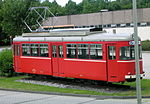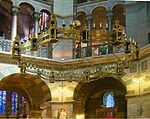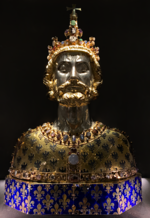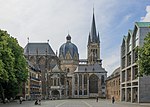Cross of Lothair
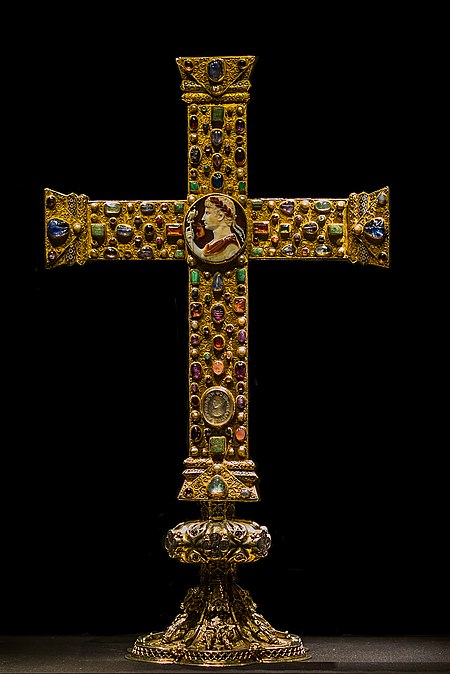
The Cross of Lothair or Lothair Cross (German: Lotharkreuz) is a crux gemmata (jewelled cross) processional cross dating from about 1000 AD, though its base dates from the 14th century. It was made in Germany, probably at Cologne. It is an outstanding example of medieval goldsmith's work, and "an important monument of imperial ideology", forming part of the Aachen Cathedral Treasury, which includes several other masterpieces of sacral Ottonian art. The measurements of the original portion are 50 cm height, 38.5 cm width, 2.3 cm depth. The cross comes from the period when Ottonian art was evolving into Romanesque art, and the engraved crucifixion on the reverse looks forward to the later period.
Excerpt from the Wikipedia article Cross of Lothair (License: CC BY-SA 3.0, Authors, Images).Cross of Lothair
Johannes-Paul-II.-Straße, Aachen Burtscheid (Aachen-Mitte)
Geographical coordinates (GPS) Address Phone number Website Nearby Places Show on map
Geographical coordinates (GPS)
| Latitude | Longitude |
|---|---|
| N 50.7751 ° | E 6.0828 ° |
Address
Domschatzkammer
Johannes-Paul-II.-Straße
52062 Aachen, Burtscheid (Aachen-Mitte)
North Rhine-Westphalia, Germany
Open on Google Maps

